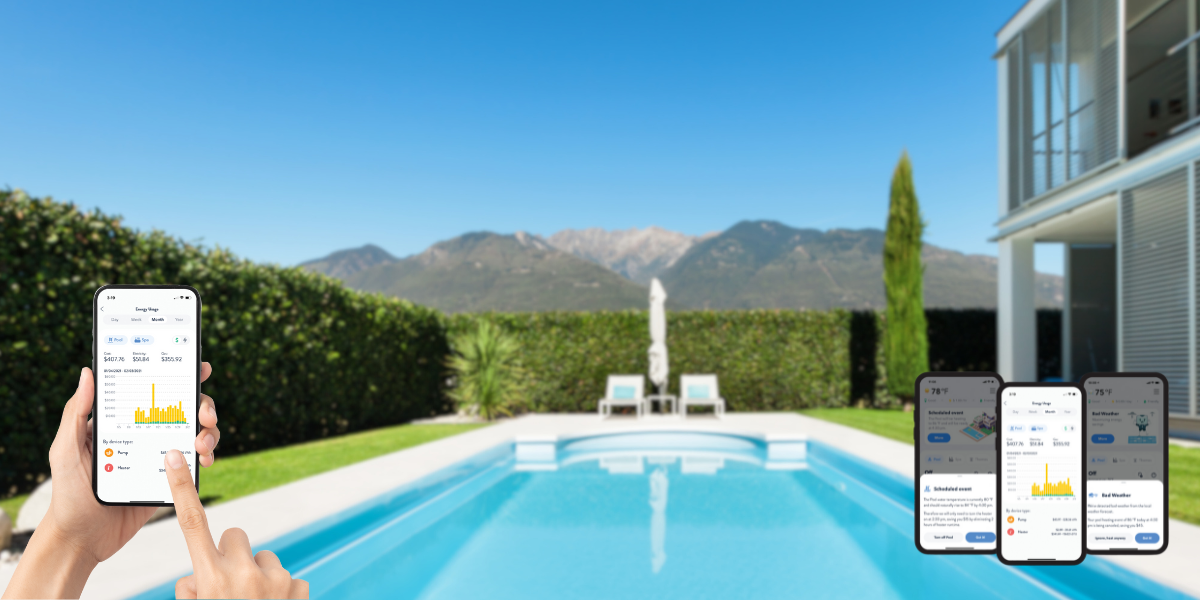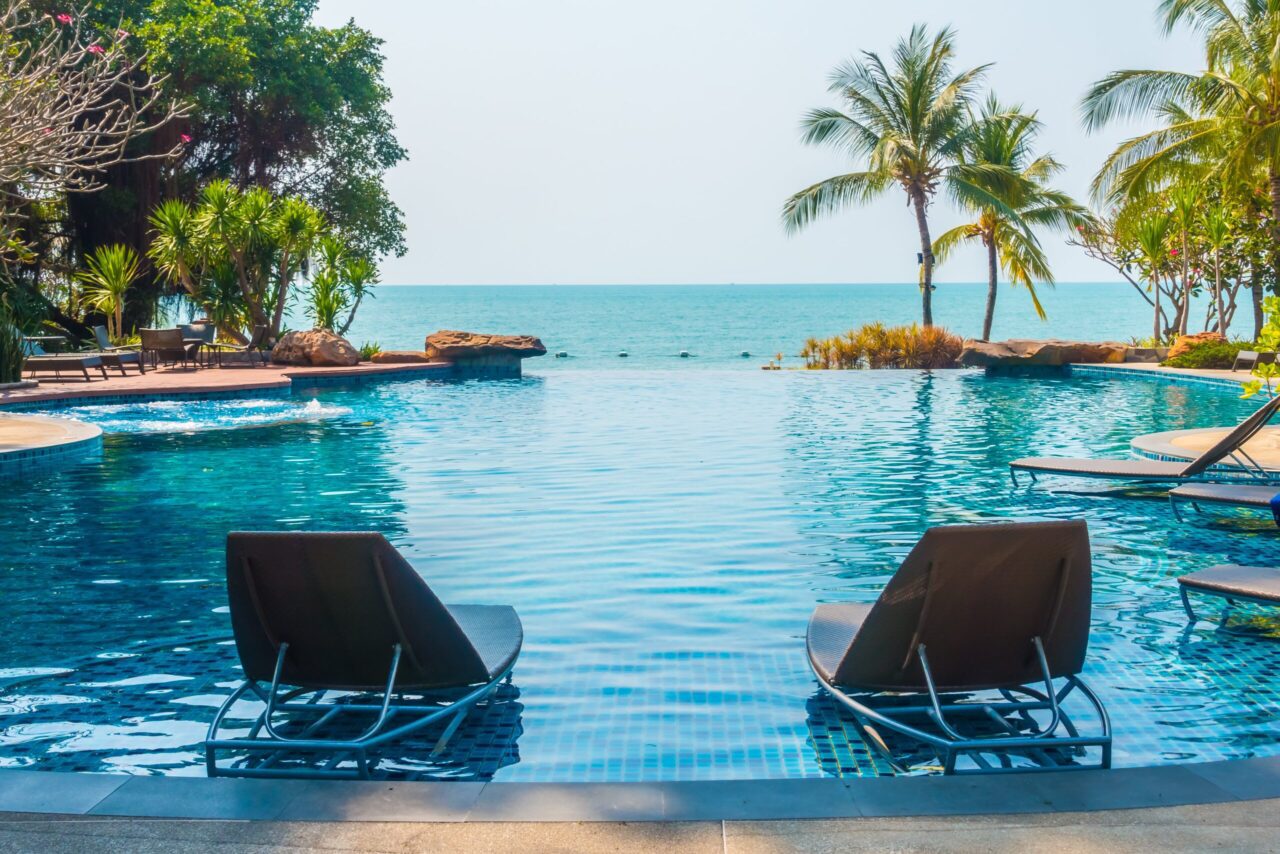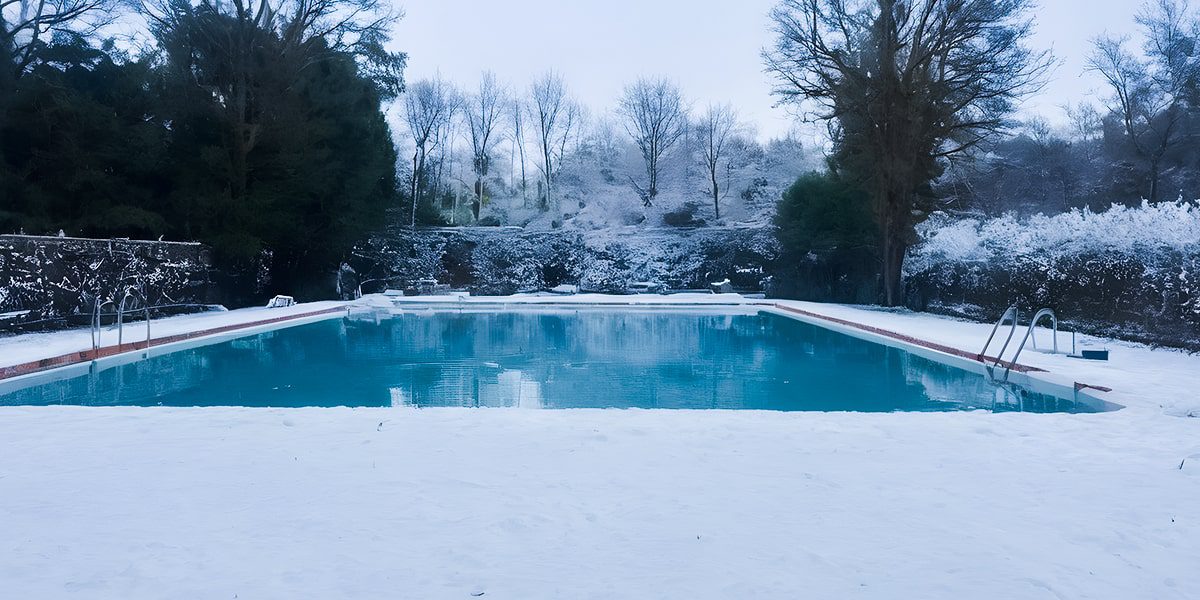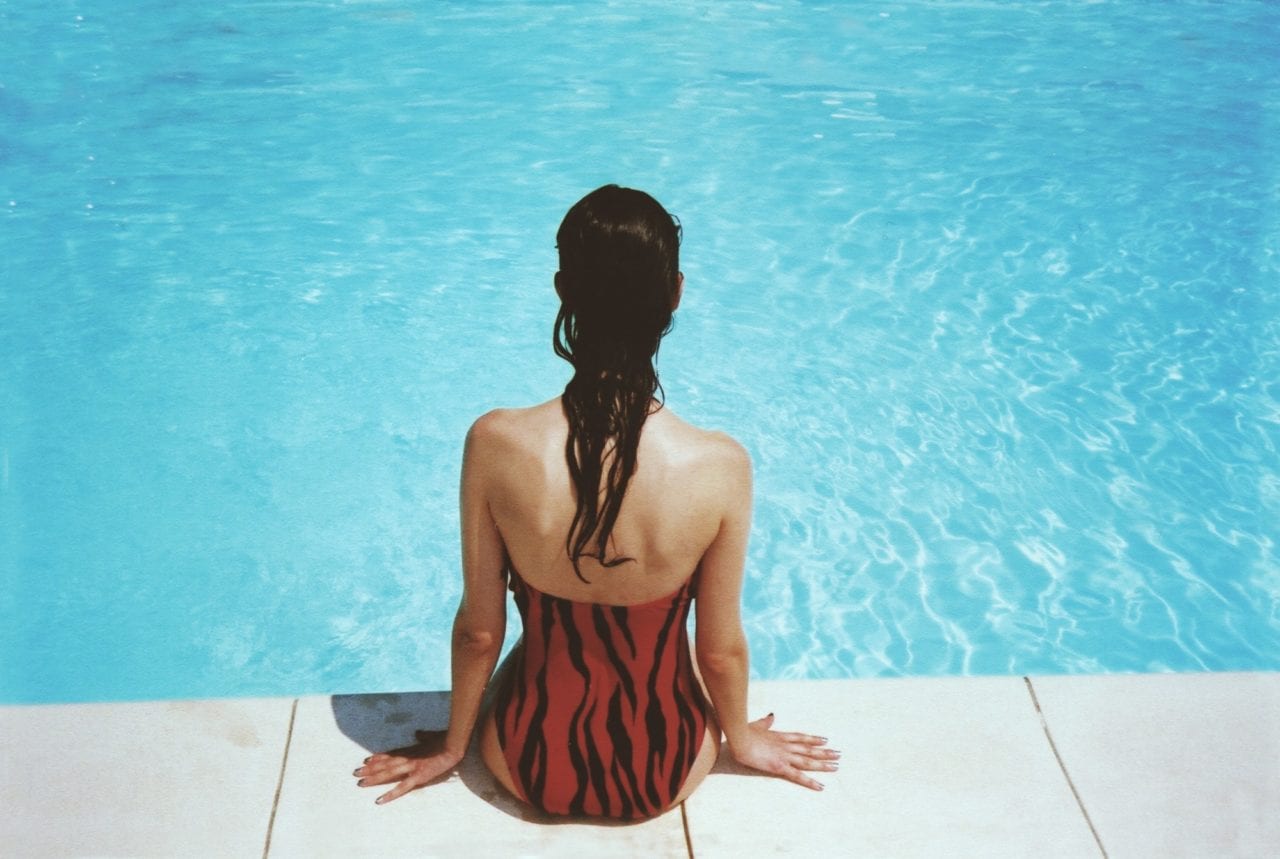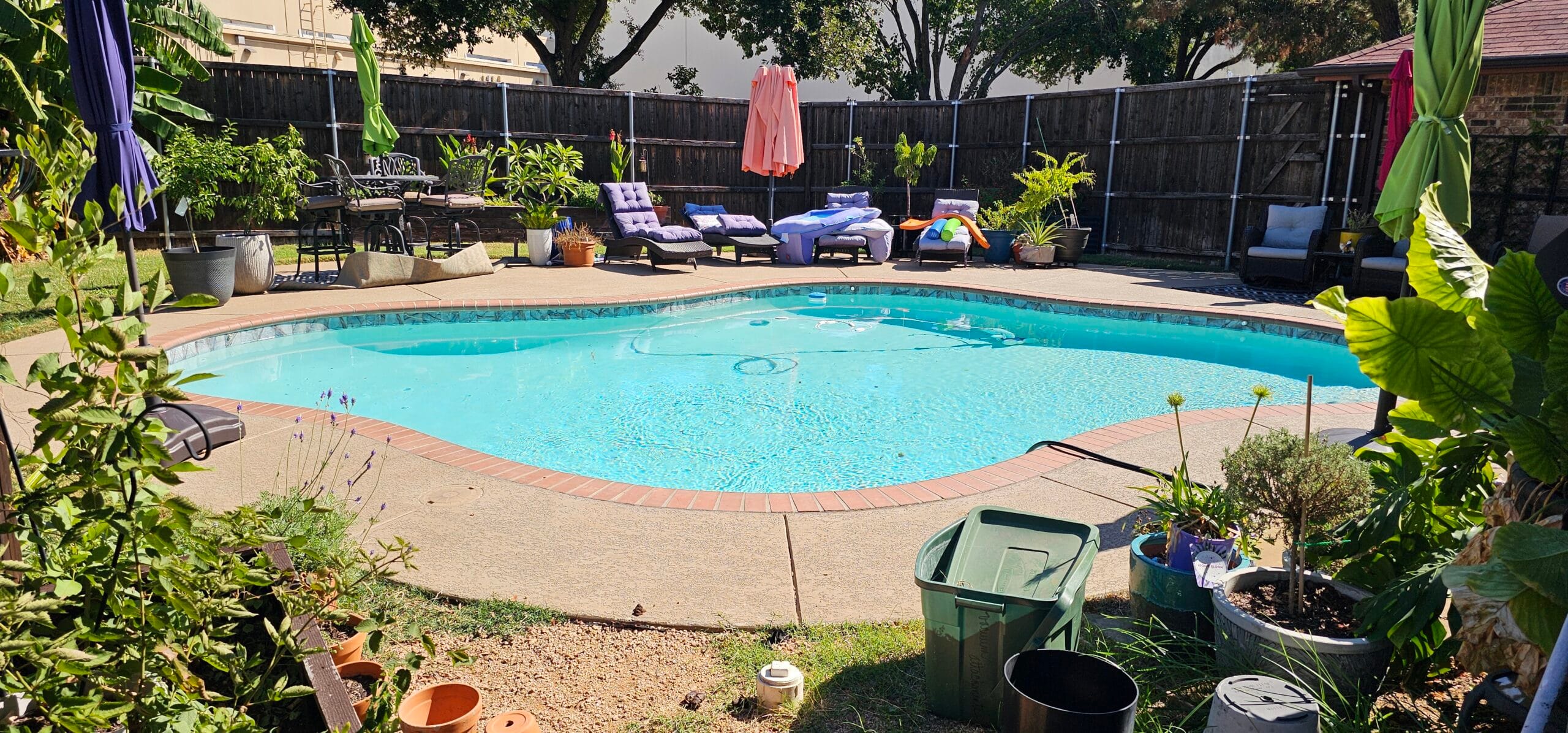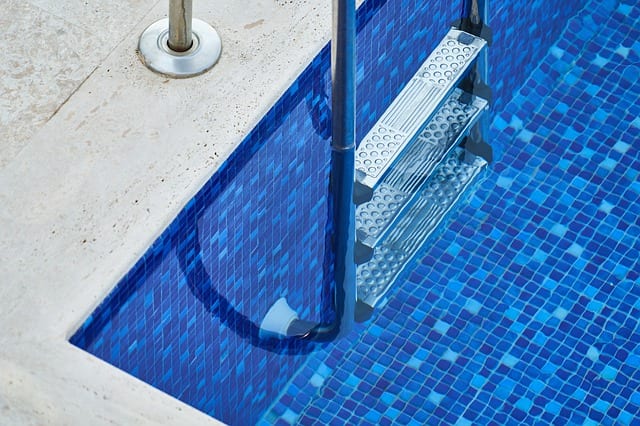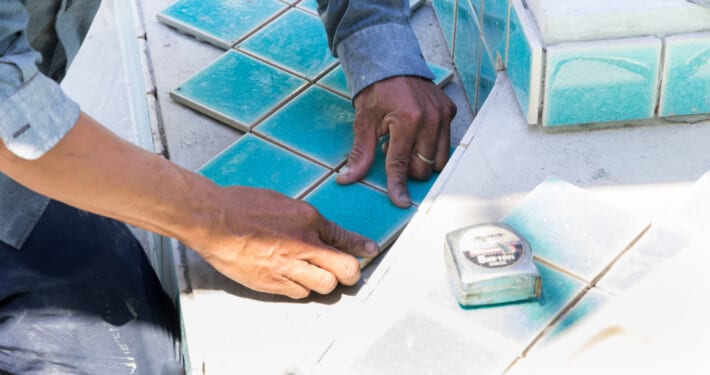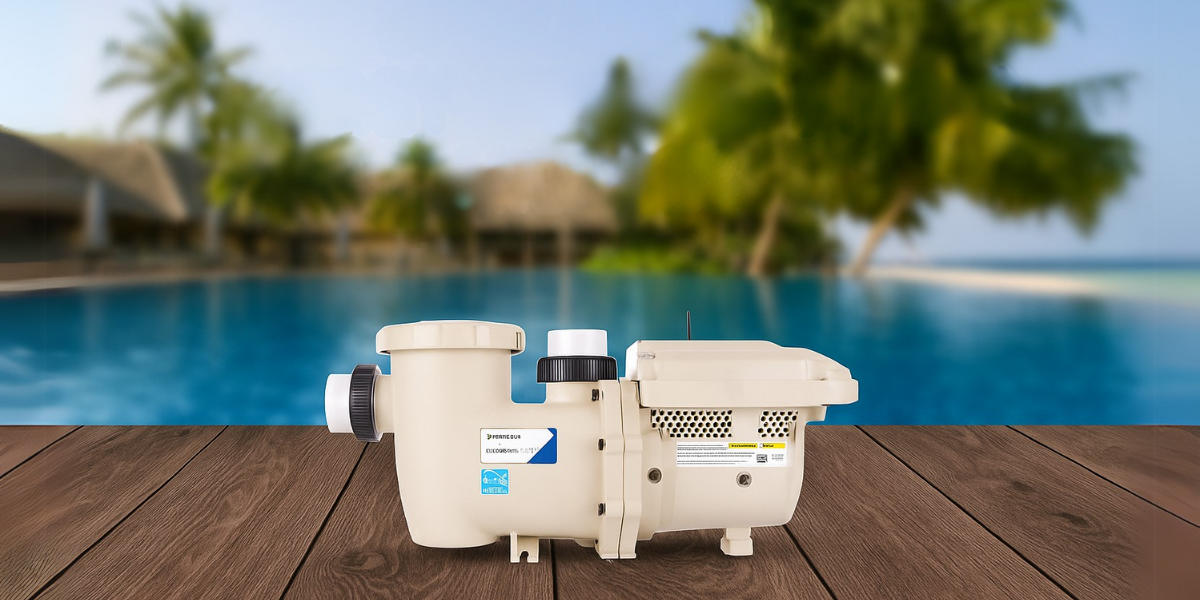Balance in all things. It’s as important in life as it is for your swimming pool. A perfect example is your pool’s pH.
As a rule, you want to maintain a range of 7.4 to 7.8. In a previous article, we talked about how to raise the pool pH level if it’s too low. In this post, we’ll show you how to lower pH if it becomes too high.
Let’s dive in!
Effects of a High pH Level
Why is high water pH level, or pH above 7.8, bad for your swimming pool? For starters, it’s unhealthy for both the swimmers and your wallet. Here are some of the problems you might have to deal with:
- You’ll hear complaints about stinging eyes, dry skin, and sticky feeling from the swimmers.
- You’ll notice that the pool has become hazy or cloudy which isn’t very appealing to those who want to swim.
- Chlorine becomes less effective at higher pH levels. The cost of adding more chlorine is more expensive than test kits for pH. Low chlorine promotes bacteria and algae growth.
- Alkalinity makes the water “hard” and can cause scale formation from calcium deposits. Scale buildup will clog your filters and pipes. This will put a strain on your pool equipment and cause various problems such as leaks and motor failure.
How to Lower pH Levels
Before doing anything, always test your water first. Use a pool test kit to check the pH, acid demand, and total alkalinity.
Once you’ve determined that the pH level is too high, you should now work to restore the balance. There are two main products for lowering the pH. These are sodium bisulfate (also known as dry acid) and muriatic acid.
Here are the steps for each product:
Sodium Bisulfate
1. Read the manufacturer’s instructions and measure the correct amount based on your initial testing. Some suggest adding ¾ of what’s recommended to allow for easier correction.
2. Sodium bisulfate usually comes in powder form. Avoid using it on a windy day to avoid blowback to your skin and clothes.
3. Add the chemical by getting down to the water as close as you can and downwind from you if it’s windy. Apply it over the water return jet site to facilitate spreading the powder throughout the pool.
4. The powder should dissolve on its own after ten to fifteen minutes.
5. Wait at least six hours for retesting but make sure to do your test within 24 hours.
Muriatic Acid
1. Muriatic acid is a powerful corrosive so make sure you’re wearing protective gear, such as gloves and goggles.
2. Again, read the instructions and measure the amount accordingly.
3. There are two ways to add muriatic acid to your pool. The first is to turn off the pump and then pour a slow, steady stream at the deep end. Allow the acid to settle at the bottom of the pool, then turn the pump back on to circulate it.
4. The second method involves pouring it over the return jets and letting the pump do its work.
5. Retest the water after six hours but don’t wait for more than 24 hours.
With the Balance Restored, All Is Well
Knowing how to lower pH levels is an important skill for every pool owner. However, if you don’t have the time or if it’s too much to handle, call us!
We can handle everything from balancing pH levels to mechanical repairs, pool cleaning, and maintenance. We’ll make sure that your swimming pool is always in tip-top shape!
Want More tips? Read other Articles


